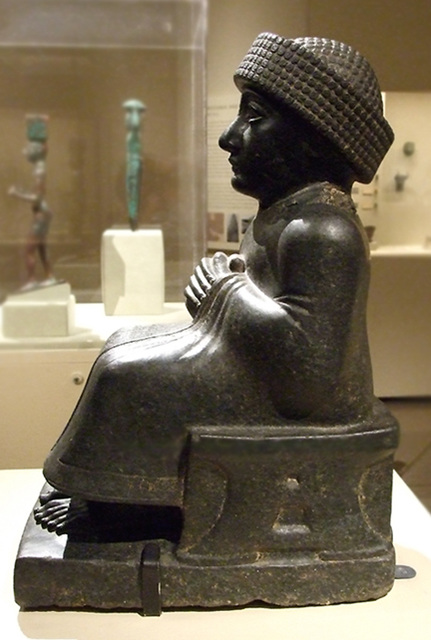Assyrian Reliefs in the Metropolitan Museum of Art…
South Italian Wall Painting in the Metropolitan Mu…
Detail of a South Italian Wall Painting in the Met…
Marble Relief of Herakles in the Metropolitan Muse…
Marble Relief of Hermes in the Metropolitan Museum…
Marble Relief of Hermes in the Metropolitan Museum…
Marble Male Cycladic Figurine in the Metropolitan…
Detail of a Roman Mosaic Floor Panel in the Metrop…
The "Cellini Cup" Ewer in the Metropolitan Museum…
The "Cellini Cup" Ewer in the Metropolitan Museum…
Perseus by Canova in the Metropolitan Museum of Ar…
Detail of the Foot of Perseus by Canova in the Met…
The Demidoff Table in the Metropolitan Museum of A…
Detail of the Demidoff Table in the Metropolitan M…
Detail of the Demidoff Table in the Metropolitan M…
Detail of the Demidoff Table in the Metropolitan M…
Detail of the Demidoff Table in the Metropolitan M…
Marble Hellenistic Grave Relief With Two Registers…
Copy of the Augustus of Prima Porta in a Ground-Fl…
Detail of a Marble Hellenistic Grave Relief With T…
Detail of a Marble Hellenistic Grave Relief With T…
Terracotta Vase from Centuripe in the Metropolitan…
Roman Silver Cup with Sculptural Decoration in the…
Seated Statue of Gudea in the Metropolitan Museum…
Seated Statue of Gudea in the Metropolitan Museum…
Detail of a Marble Pediment of a Funerary Altar in…
Marble Relief Fragment of an Animal Hunt from Sard…
Marble Pediment of a Funerary Altar in the Metropo…
Marble Strigilated Vase in the Metropolitan Museum…
Seated Torso of a Man in the Metropolitan Museum o…
Marble Strigilated Vase in the Metropolitan Museum…
Detail of a Foot of the Monumental Bronze Statue o…
Detail of a Foot of the Monumental Bronze Statue o…
Detail of the Midsection of the Monumental Bronze…
Detail of the Head of the Monumental Bronze Statue…
Detail of the Monumental Bronze Statue of the Empe…
Detail of the Monumental Bronze Statue of the Empe…
Detail of the Monumental Bronze Statue of the Empe…
Monumental Bronze Statue of the Emperor Trebonianu…
Monumental Bronze Statue of the Emperor Trebonianu…
Monumental Bronze Statue of the Emperor Trebonianu…
Monumental Bronze Statue of the Emperor Trebonianu…
Reconstruction Drawing of a Statue of Trebonianus…
Head of a Ruler in the Metropolitan Museum of Art,…
Standing Male Worshiper in the Metropolitan Museum…
Location
See also...
Keywords
Authorizations, license
-
Visible by: Everyone -
All rights reserved
-
823 visits
Seated Statue of Gudea in the Metropolitan Museum of Art, July 2007


Seated statue of Gudea, 2150–2100 B.C.; Neo-Sumerian period
Probably Tello (ancient Girsu), southern Mesopotamia
Diorite; H. 17 3/8 in. (44 cm)
Harris Brisbane Dick Fund, 1959 (59.2)
The Akkadian empire collapsed after two centuries of rule, and during the succeeding fifty years, local kings ruled independent city-states in southern Mesopotamia. The city-state of Lagash produced a remarkable number of statues of its kings as well as Sumerian literary hymns and prayers under the rule of Gudea (ca. 2150–2125 B.C.) and his son Ur-Ningirsu (ca. 2125–2100 B.C.). Unlike the art of the Akkadian period, which was characterized by dynamic naturalism, the works produced by this Neo-Sumerian culture are pervaded by a sense of pious reserve and serenity.
This sculpture belongs to a series of diorite statues commissioned by Gudea, who devoted his energies to rebuilding the great temples of Lagash and installing statues of himself in them. Many inscribed with his name and divine dedications survive. Here, Gudea is depicted in the seated pose of a ruler before his subjects, his hands folded in a traditional gesture of greeting and prayer. The Sumerian inscription on his robe lists the various temples that he built or renovated in Lagash and names the statue itself, "Gudea, the man who built the temple; may his life be long."
Text from: www.metmuseum.org/toah/ho/02/wam/hod_59.2.htm
Probably Tello (ancient Girsu), southern Mesopotamia
Diorite; H. 17 3/8 in. (44 cm)
Harris Brisbane Dick Fund, 1959 (59.2)
The Akkadian empire collapsed after two centuries of rule, and during the succeeding fifty years, local kings ruled independent city-states in southern Mesopotamia. The city-state of Lagash produced a remarkable number of statues of its kings as well as Sumerian literary hymns and prayers under the rule of Gudea (ca. 2150–2125 B.C.) and his son Ur-Ningirsu (ca. 2125–2100 B.C.). Unlike the art of the Akkadian period, which was characterized by dynamic naturalism, the works produced by this Neo-Sumerian culture are pervaded by a sense of pious reserve and serenity.
This sculpture belongs to a series of diorite statues commissioned by Gudea, who devoted his energies to rebuilding the great temples of Lagash and installing statues of himself in them. Many inscribed with his name and divine dedications survive. Here, Gudea is depicted in the seated pose of a ruler before his subjects, his hands folded in a traditional gesture of greeting and prayer. The Sumerian inscription on his robe lists the various temples that he built or renovated in Lagash and names the statue itself, "Gudea, the man who built the temple; may his life be long."
Text from: www.metmuseum.org/toah/ho/02/wam/hod_59.2.htm
- Keyboard shortcuts:
Jump to top
RSS feed- Latest comments - Subscribe to the comment feeds of this photo
- ipernity © 2007-2024
- Help & Contact
|
Club news
|
About ipernity
|
History |
ipernity Club & Prices |
Guide of good conduct
Donate | Group guidelines | Privacy policy | Terms of use | Statutes | In memoria -
Facebook
Twitter

Sign-in to write a comment.